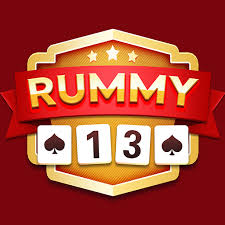Rummy 13 is a contemporary variant of the classic Rummy card game that retains the essence of traditional gameplay while introducing some unique features and rules. This version of Rummy offers a fresh and engaging experience for players who enjoy strategic card games. In this article, we’ll explore what makes Rummy 13 special, its gameplay mechanics, key features, and strategies for mastering the game.
What is Rummy 13?
Rummy 13 is a variation of the classic Rummy game, which is known for its skillful card combinations and strategic play. The game typically involves the same fundamental objective of forming sets and sequences, but with specific rules and variations that distinguish it from other Rummy versions. The “13” in Rummy 13 often refers to the number of cards dealt to each player, which adds a unique twist to the traditional gameplay.
Key Features of Rummy 13
- Distinct Gameplay Mechanics: Rummy 13 introduces specific rules and mechanics that set it apart from other Rummy variants. These rules often include unique scoring systems, card combinations, and game dynamics that enhance the classic Rummy experience.
- 13 Cards: In Rummy 13, each player is typically dealt 13 cards, which influences the strategy and approach to the game. The number of cards adds a new layer of complexity and challenge to the gameplay.
- Multiplayer Options: Rummy 13 supports multiplayer gameplay, allowing players to compete against friends or other participants online. This social aspect enhances the competitive nature of the game.
- Bonus Features: Some versions of Rummy 13 include bonus features or special rules that offer additional opportunities for scoring points or gaining advantages during the game.
- User-Friendly Interface: The game is designed with an intuitive interface that makes it accessible and enjoyable for players of all skill levels.
How to Play Rummy 13
Objective
The primary objective of Rummy 13 is to form valid sets and sequences using the 13 cards dealt to each player. A set consists of cards of the same rank but different suits, while a sequence is a consecutive series of cards of the same suit. The goal is to complete your hand by forming these combinations while adhering to the specific rules of Rummy 13.
Game Setup
- Deck: Rummy 13 is played with one or two standard 52-card decks, which may include jokers depending on the variant.
- Dealing: Each player is dealt 13 cards, and the remaining cards form the draw pile. One card is placed face up to start the discard pile.
Gameplay
- Turns: Players take turns drawing a card from either the draw pile or the discard pile and then discarding one card from their hand. The objective is to form valid sets and sequences.
- Forming Sets and Sequences: Players must create sets and sequences using the cards in their hand. The rules for forming these combinations are similar to traditional Rummy but may include specific variations for Rummy 13.
- Sets: A set consists of three or four cards of the same rank but different suits.
- Sequences: A sequence consists of three or more consecutive cards of the same suit.
- Special Rules: Rummy 13 may include specific rules or features that affect gameplay, such as:
- Jokers: If jokers are used, they can be employed as wild cards to substitute for any other card in sets or sequences.
- Bonus Points: Some versions may offer bonus points for achieving particular combinations or completing specific tasks during the game.
- Declaration: A player can declare and end the round when they have formed all necessary sets and sequences. They must reveal their hand to the other players to complete the declaration.
- Scoring: Scoring in Rummy 13 involves calculating points based on the remaining cards in the hands of other players when a declaration is made. The scoring system may vary depending on the rules of Rummy 13 and any special features included.
Strategies for Rummy 13
- Understand the Rules: Familiarize yourself with the specific rules and variations of Rummy 13. Understanding these rules is crucial for forming valid sets and sequences and maximizing your score.
- Form a Strategy: Develop a strategy for forming sets and sequences based on the 13 cards in your hand. Prioritize completing essential combinations and consider how to use jokers or special features effectively.
- Observe Opponents: Pay attention to the cards your opponents are drawing and discarding. This information can help you gauge their strategies and make better decisions about your own hand.
- Manage Your Hand: Be strategic about the cards you hold and discard. Aim to keep cards that are useful for forming sets or sequences while discarding those that are less likely to contribute to your hand.
- Adapt Your Approach: Be flexible and adapt your strategy based on the cards you draw and the actions of your opponents. Adjust your approach as needed to achieve your goals and stay competitive.
Unique Aspects of Rummy 13
- Card Count: The use of 13 cards per player introduces a new dimension to the game, affecting strategy and decision-making.
- Innovative Rules: Rummy 13’s unique rules and features offer a fresh take on traditional Rummy, providing players with new challenges and opportunities.
- Dynamic Gameplay: The game’s dynamic and engaging nature ensures that players remain involved and challenged throughout each round.
Conclusion
Rummy 13 offers a modern and engaging twist on the classic Rummy card game, combining familiar gameplay with new rules and features. Its unique mechanics, 13-card format, and strategic depth make it an appealing choice for card game enthusiasts seeking a fresh and exciting experience.
Whether you’re a seasoned Rummy player or new to the game, Rummy 13 provides an opportunity to enjoy a dynamic and challenging card game with a contemporary twist. Dive into Rummy 13 today and experience the thrill of this innovative Rummy variant!




